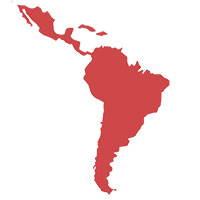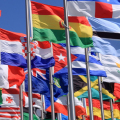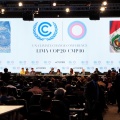Explosive First Steps on the Path to Paris
Hamish M | December 9, 2014.
Fault lines are forming at the UN climate talks in Lima as negotiators begin to debate the nitty-gritty of a global climate treaty. The first day of high-level negotiations were marked by false-starts and fierce contestation as countries set to lock-in favourable terms before next year’s Paris conference, whereupon the treaty will be decided.
The release of a new draft treaty set the ball rolling on a busy day of negotiations. The powerful G77+China negotiating bloc slammed the draft treaty for excluding the vast majority of their suggestions, kicking off a painstaking review of the text, with hours spent scrutinising each line.
Most controversial was debate on how to apportion responsibility for climate action among countries. The notion of ‘common but differentiated responsibility’ was enshrined in the original 1992 UN climate convention, yet is viewed by many as an outdated framing. Both the US and China are advocating for a shift to ‘evolving’ responsibilities, to reflect changes in emissions and economic growth. The G77 bloc of poor countries are trying to prevent this shift, instead advocating to maintain the status quo, which locates most responsibility for emissions cuts on the developed world.
Polarising the delegations, the developed world also moved to water down efforts to include in the Paris treaty, a compliance mechanism to ensure that countries comply with their emissions reduction pledges. Tuvalu, on behalf of the world’s poorest countries, argued for the establishment of a new body that would both help states to cut emissions, and impose penalties on those who fail to do so. However the big emitters slammed the notion of a punitive body, with the EU rejecting any form of judicial oversight.
With all countries set to announce their own emissions reduction targets by May next year, the US, Australia and Japan attempted to shut down discussion, claiming it was useless arguing over a compliance body until we know what each country is complying with. Mexico went the furthest, arguing that a compliance body monitor not only emissions cuts but all climate change adaptation policies. In a move likely to prove incendiary, many states shut down Mexico’s proposal. Saudi Arabia was alone in suggesting the new treaty have no compliance requirements at all. With no compliance mechanism, the prospects of an effective treaty would be greatly diminished.
Intensifying the pressure is a debate over what needs to happen to activate the treaty once it is written. Though the start date of the treaty is nominally 2020, it will only take effect if it meets a minimum threshold of ratification from its member states. Tuvalu’s poor countries bloc argued for the simplest possible threshold, suggesting the treaty come into force when a minimum number of countries ratify it. Japan, like most states, wants a double threshold, with the treaty becoming active when a minimum number of countries, representing a minimum proportion of the world’s carbon emissions, sign up to it. Norway warned that activation thresholds should not become a ‘straightjacket’, forcing the activation of the treaty at an arbitrary point, and Canada wanted provision for domestic politics to take precedence over the actions of other states in enforcing legally binding emissions cuts.
Negotiation on the ADP texts will continue through the week, with COP President Pulgar-Vidal expressing his hope that they could wrap up Thursday night in order to be presented as a decision at the closing plenary this Friday.
With reporting from Andrés Fuentes.













comment